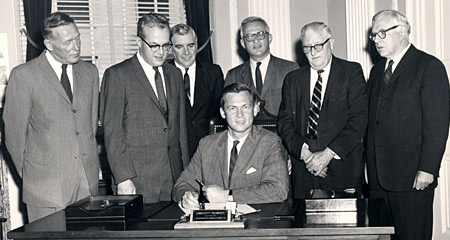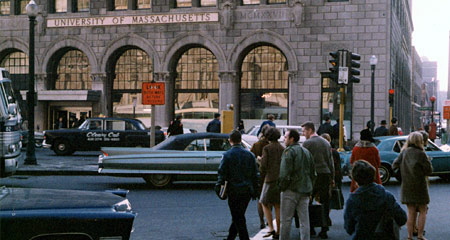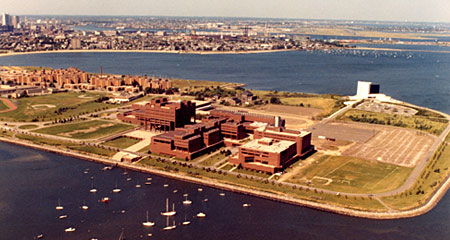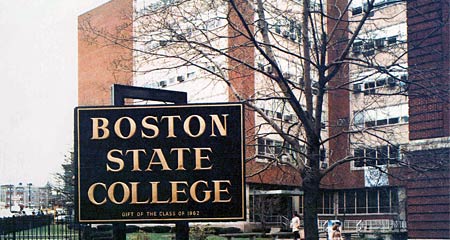University Roots
Before the University of Massachusetts Boston was founded in 1964, the Bay State’s only public university was in Amherst. Those seeds were sown in 1863 with the establishment of Massachusetts Agricultural College (Mass Aggie), the commonwealth’s rural land-grant college. Over time, the college expanded its curriculum and became the University of Massachusetts (UMass) in 1947.
In 1964, amid growing political turmoil, civil-rights activism, and urban unrest, applications from the first wave of baby boomers inundated colleges and universities. UMass lacked the space to accommodate the many students who wanted to attend college in Amherst. Among the 8,000 applicants UMass rejected that year were 1,400 qualified students from metropolitan Boston—most of whom could not afford a private college education.
To Massachusetts legislators, this signaled an urgent need to offer an affordable university education to metropolitan Boston residents, and apply university-quality research to critical urban issues. In June 1964, the legislature voted to establish the University of Massachusetts Boston (UMass Boston), the second university in the UMass system.

In 1965, UMass Boston opened its doors to 1,227 undergraduate students and 200 faculty in a renovated building in Park Square downtown.

Reading from the university’s Statement of Purpose at the 1966 Founding Day Convocation ceremony, newly inaugurated Chancellor John W. Ryan said, “We have an obligation to see that the opportunities we offer … are indeed equal to the best that private schools have to offer.”
A New Home
School officials announced in 1968—to the dismay of some—that UMass Boston’s future home would be on Columbia Point in Dorchester, a 100-acre landfill and former cow pasture on a peninsula jutting into Dorchester Bay. The new campus opened its doors in January 1974, and the university community settled into McCormack and Wheatley halls, the Science Center, Healey Library, and Quinn Administration Building.

By then the university had divided itself into College 1 and College 2. Both engaged in the arts and sciences, but College 1 took a more innovative, interdisciplinary approach, while College 2 used more traditional methods. They eventually united in the mid-1970s to become the College of Arts and Sciences, joining two other colleges established earlier in the decade: the College of Public and Community Service and the College of Professional Studies (now the College of Management).
Enter Boston State College

On August 21, 1981, faced with deep cuts in the state’s higher education budget, the Board of Regents voted to close Boston State College. At that time Boston State, founded in 1852 as a normal school for teacher training, offered day and evening bachelor’s and master’s degree programs in the liberal arts and sciences, as well as in many professional areas. Its evening programs were designed for nontraditional students with full-time jobs.
Closing the college enabled the commonwealth to eliminate program redundancies with UMass Boston and organize the remainder under a single university administration. When Boston State was incorporated into UMass Boston in January 1982, the university gained graduate and undergraduate programs in education; undergraduate programs in criminal justice, nursing, and regional studies; and an evening division.
The influx of hundreds of students from Boston State, plus a dramatic rise in new applications, boosted undergraduate enrollment by 38 percent, and the college’s graduate programs tripled UMass Boston’s graduate enrollment. This gave the university the momentum to add more graduate degree offerings, including doctoral programs, throughout the 1980s and into the 1990s. By 1995, UMass Boston had 31 graduate degree and certificate programs, with graduate students comprising 21 percent of total enrollment.
Historic images courtesy of the University Archives and Special Collections